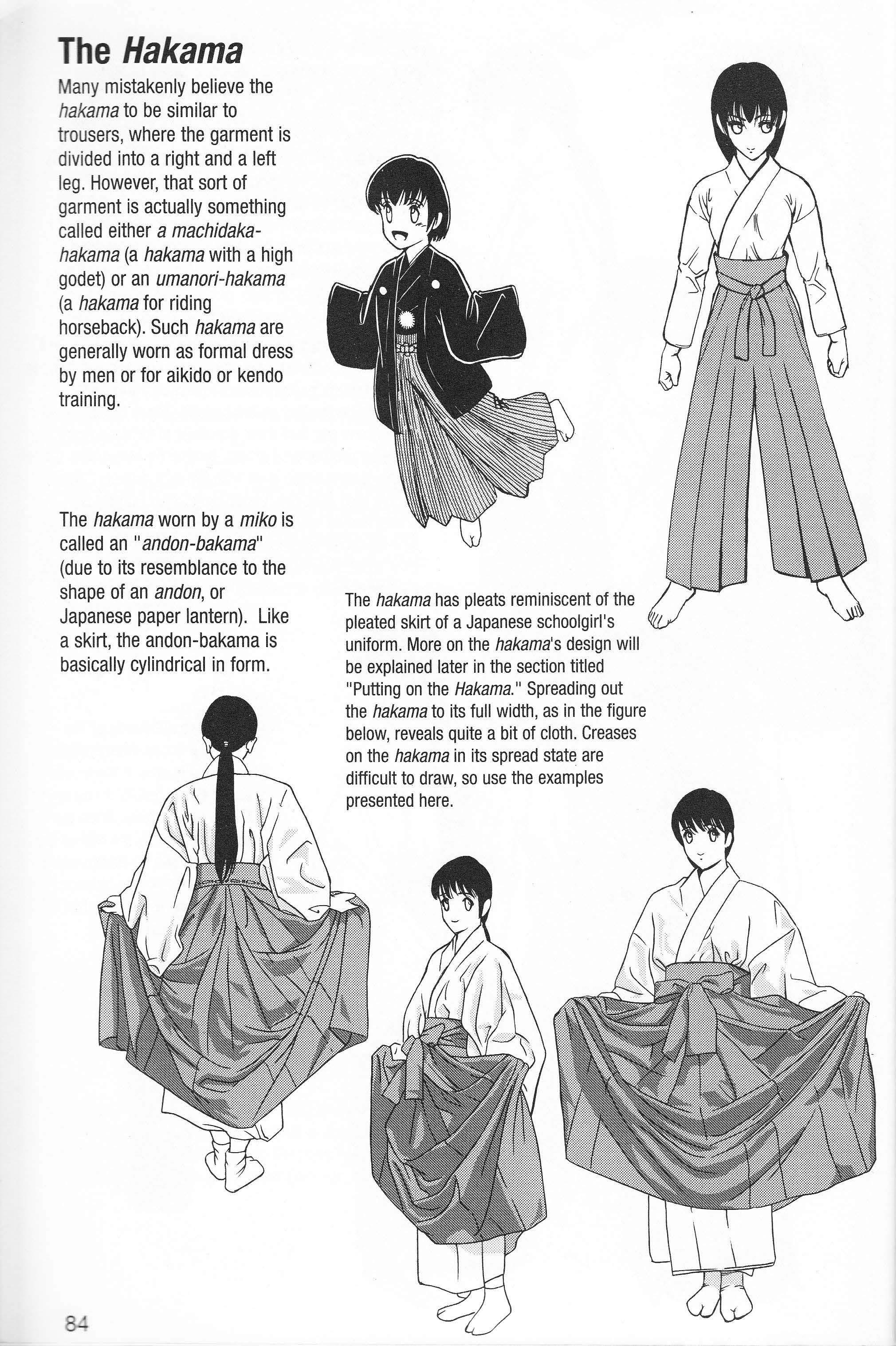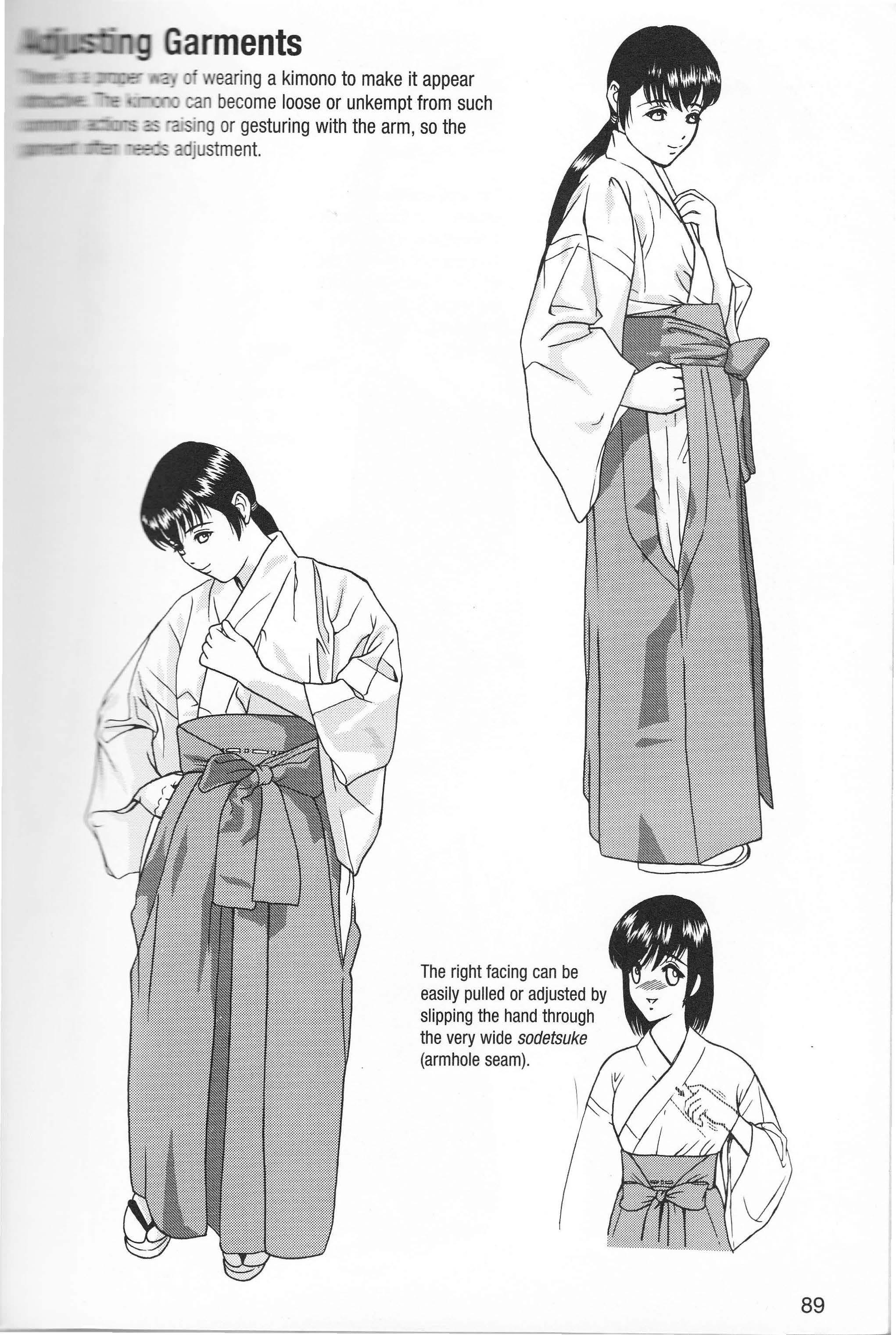
3 minute read
Hakama Colors
by Charlie San
The Undergarments
First, the miko puts on the susoyoke (an underskirt), and over that dons a hadajuban (a short, wrapped undergarment). Nowadays, a brassiere and panties are frequently worn under the susoyake and hadajuban, but the lattertNo constitute the traditional undergarments worn by the miko.
The susoyake is white and ends above the ankles, leaving the feet exposed. The susoyake covers the lower half of the body and serves to prevent the feet from becoming entangled in the long skirt of the Japanese robe, which extends all the way to the ankles. This undergarment corresponds to the Western slip or underskirt. The hadajuban is made of a fabric similar to thick gauze or bleached cotton cloth. It is so lightNeight that the miko's figure is visible from underneath.
The hadajuban is short in length, ending approximately at the hips.
Hakui (white robe)
The miko wears a white robe called a hakui over the undergarments.
Sodetsuke (armhole seam)
Sleeve Height
End of the Eri (robe collar/facing) Bottom of the sleeve
'Seam of the Okumi (panel under the collar) Senui (back seam) /
As is apparent from the illustrations above, a kimono has an okumi seam and a senui seam on the front and back, indicating its center. When the kimono is worn, these seams should fall over the axial line of the body; however, the front okumi seam will fall at an angle leaning toward the end of the robe facing. Only a small part of the okumi seam is actually visible. Please see the following pages for reference.
i is basically ed similarly to other . However, those who amiliar with the ten d to leave out the
:c efinition below). Take include such essential
_, e kimono on this character is worn e only time the right front panel of a apped over the left panel is when the on a body dressed for burial. On a living e left panel is always folded over the right.

This figure shows the structure of the sleeve from the armhole and beyond. Underneath the sleeve of the hakui lies the sleeve of the hadajuban. A woman's kimono tends to be cut on the long side, and the ohashori is a fold or tuck used to adjust the kimono 's length to her height. The ohashori is not present on a man's kimono.
Occasionally, a red collar can be seen from underneath the miko's white hakui. This is not an actual kimono, but simply a false, removable collar, wrapped around the inside of the hakw's collar and added as an accent.
Putting on the Hakama
The hakama has openings on the right and left sides to help align the back and the front when dressing.
The hakama is fastened in the front with a sash , tied in a bow. The knot itself is situated somewhat lower than the obi (broad sash of a kimono). A decorative cord woven into the obi should also be visible. The obi lies The side openings end just above the knees.
This is the knot of the obi attached to the front of the hakama.
The pleats are referred to as "box pleats," and fold toward the center of the front and four in the back.
This obi secures the hakui.
The back obi is reinforced to help it maintain its ., shape. The front obi is similarly structured.
The obi becomes a soft sash at the

opening. The decorative cord is attached to the obi in the following two patterns: • One consists of seven alternating, tiny intervals, the fourth of which appears in the direct center of the hakama. • The other consists of six wider intervals, gradually becoming smaller toward the center of the hakama and then broadening
the hakama. There are four pleats in
again. The illustration above is a close-up of the cord. It is woven into the obi of the hakama similar to the way a belt weaves in and out of the belt loops of pants.










